Big companies have been usually founded by and run by men. But plenty of successful companies have been kick-started by women, and many startups with women founders are being established. According to a 2015 report by the National Association of Women Business Owners, there were more than 9.1 million firms owned by women in the US, generating $1.4 trillion in sales. In that same year, the Huffington Post reported that there are 17.9% of women business founders – still a small founder, but a very significant increase from 9.5% in 2009.
Here are some of the successful companies female entrepreneurs have founded:
 1. Kikkoman
1. Kikkoman
The world’s best-known soy sauce brand was founded by an upper-class war widow named Shige Maki back in the 1600s. She escaped with her son from Osaka Castle to Edo (known today as Tokyo) after her husband’s death. Maki and her son learned how to cultivate rice and brew soy sauce like her neighbors. She refined their production process and created a great-tasting soy sauce. She sold it to locals, starting the company known today as Kikkoman, which still produces a version of Maki’s creation even after 350 years.
 2. Cisco
2. Cisco
Sandy Lerner co-founded the technology giant Cisco in the early 1980s alongside her then-husband Len Bosack. While both working at Stanford University, the couple were frustrated because they could not email each other from offices in different buildings, so they developed a multi-protocol router that allowed multi-network exchanges – pioneering the concept of a local area network (LAN). The technology became so in-demand, giving them $1.5 million in sales by the following year.
When the company grew, Lerner was eventually fired in 1990, and her marriage with Bosack didn’t work out. However, Lerner did not fall apart after the divorce. She co-founded the make-up line Urban Decay, a brand that is also a raging success.
 3. SlideShare
3. SlideShare
The world’s largest community for sharing presentations has been co-founded by a woman named Rashmi Sinha. She earned a Ph.D. in Cognitive Neuropsychology at Brown University and took computer science courses. She then moved to San Francisco to conduct her post-doctorate research at the University of California, Berkeley and switched her focus to human-computer interaction.
Sinha co-founded a user experience consulting company Uzanto, which worked with firms like eBay, AAA and Blue Shield. In 2005, she launcher her first product, a game-like software for customer research, MindCanvas. A year later, she co-founded SlideShare with her husband and chief technology officer Jonathan Boutelle. In 2013, it was acquired by LinkedIn. Today, SlideShare has over 70 million monthly visitors.
 4. Liquid Paper
4. Liquid Paper
When secretary and single mom Bette Nesmith Graham discovered that white, water-based tempera paint and a thin paintbrush can neatly cover her typing errors in 1956, she worked on perfecting the solution with the help of her son’s chemistry teacher at Thomas Jefferson High School. She called her correction paint, which was named “Mistake Out” that time, and slowly started a sideline after her shifts by selling bottles. By 1958, she founded the Mistake Out Company but was eventually fired from her typist job after she put her company name instead of her employer’s name on a piece of correspondence.
The name of her business was eventually changed to Liquid Paper. By 1968, her product was successful enough for her to build her own factory and offices. Liquid Paper was sold to the Gillette Corporation in 1979 and is now owned by Newell Rubbermaid, which endorses the product as Papermate.
 5. Flickr
5. Flickr
The popular photo-sharing website Flickr is a brainchild of Caterina Fake and her then-husband Stewart Butterfied. The site was actually just a part of a game they both developed. Eventually, they were forced to shut down the game, but the photo-sharing technology they designed was a hit. In 2005, they sold Flickr to Yahoo for $35 million in cash and stock options
Fake eventually co-founded the website Hunch, a site that made recommendations to users based on their preferences and has been named as the Chairman of the Board of Etsy, a handmade online marketplace. She also invested in TypeKit, Kickstarter and other startups.
 6. Proactiv
6. Proactiv
Dermatologists Katie Rodan and Kathy Fields were classmates studying dermatology together at the Stanford University School of Medicine in the 1980s. They became friends and they became dedicated to finding a better treatment for acne. Over five years, they launched a comprehensive acne skin care system called Proactiv Solution, which was different from spot-treatment-style products that were abundant in the market at that time. The product was able to leave skin smooth, clean and clear, and it has found success via celebrity endorsements and television infomercials. Famous personalities like Justin Beiber and Katy Perry have turned Rodan and Fields’ skincare product line into a household name.
 7. The Body Shop
7. The Body Shop
Inspired by traveling the world and by lessons her mother’s beauty habits during World War II, Anita Roddick learned a lot about unique body care customs. Applying what she had learned, she opened the first Body Shop store in Brighton, England in 1976. It offered bath and body products that are earth- and animal-friendly, thus shaping the concept of ethical consumerism. She was an environmental and social activist, and her company was one of the firsts to ban the use of ingredients tested in animals, as well as one of the firsts to promote fair trade with third world countries.
Thirty years after founding, L’Oréal bought the company for $1.4 billion. The Body Shop’s franchise program is successful and it has opened more than 2,500 stores in 61 countries all over the world today.
 8. Eventbrite
8. Eventbrite
Julia Hartz, an Eventbrite co-founder, was geared up to be a TV executive. She interned at the set of Friends and had executive roles at MTV and FX Networks. But she branched out the television industry to jump into the startup scene in 2006 and founded event ticketing site Eventbrite with her husband.
Hartz is an advocate of fostering happiness in the workplace. Under her presidency, the company was voted one of the “Best Places to Work in the San Francisco Bay Area” on its sixth year and became one of Fortune’s 100 Best Workplaces for Women and for Millennials.
 9. Build-A-Bear Workshop
9. Build-A-Bear Workshop
After an unsuccessful shopping trip for Beanie Babies with a friend’s young daughter, Maxine Clark ran with the idea of letting kids build their own teddy bears at the suggestion of the kid. In 1997, she opened her first Build-A-Bear store, which looked like a “theme park factory in a mall.” It became an absolute hit for small children with at least 425 Build-A-Bear stores open around the world.
 10. Polyvore
10. Polyvore
The founding story for Jess Lee was somewhat different. She wasn’t part of the first core team who created the fashion trend-spotting site Polyvore; she was just an early user who sent in detailed, extensive feedback pointing out issues in the website and suggesting ideas on how to fix it in 2008. Her insights became valuable to the site creators, prompting founder Pasha Sadri to hire her as part of the group. Under her guidance, the fixes she suggested were made to the site. By 2010, she was approached by the founders to be recognized as an official co-founder of Polyvore, even though she wasn’t there since day one. As the company staff grew, she and Sadri were essentially running the company altogether. In 2012, Sadri and Lee switched roles: Sadri became the CTO while she became CEO.

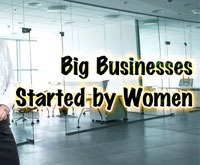
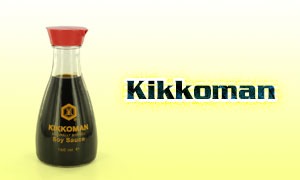 1. Kikkoman
1. Kikkoman 2. Cisco
2. Cisco 3. SlideShare
3. SlideShare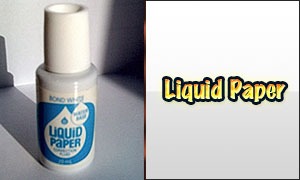 4. Liquid Paper
4. Liquid Paper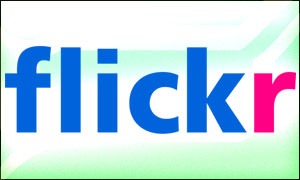 5. Flickr
5. Flickr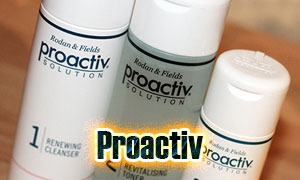 6. Proactiv
6. Proactiv 7. The Body Shop
7. The Body Shop 8. Eventbrite
8. Eventbrite 9. Build-A-Bear Workshop
9. Build-A-Bear Workshop 10. Polyvore
10. Polyvore